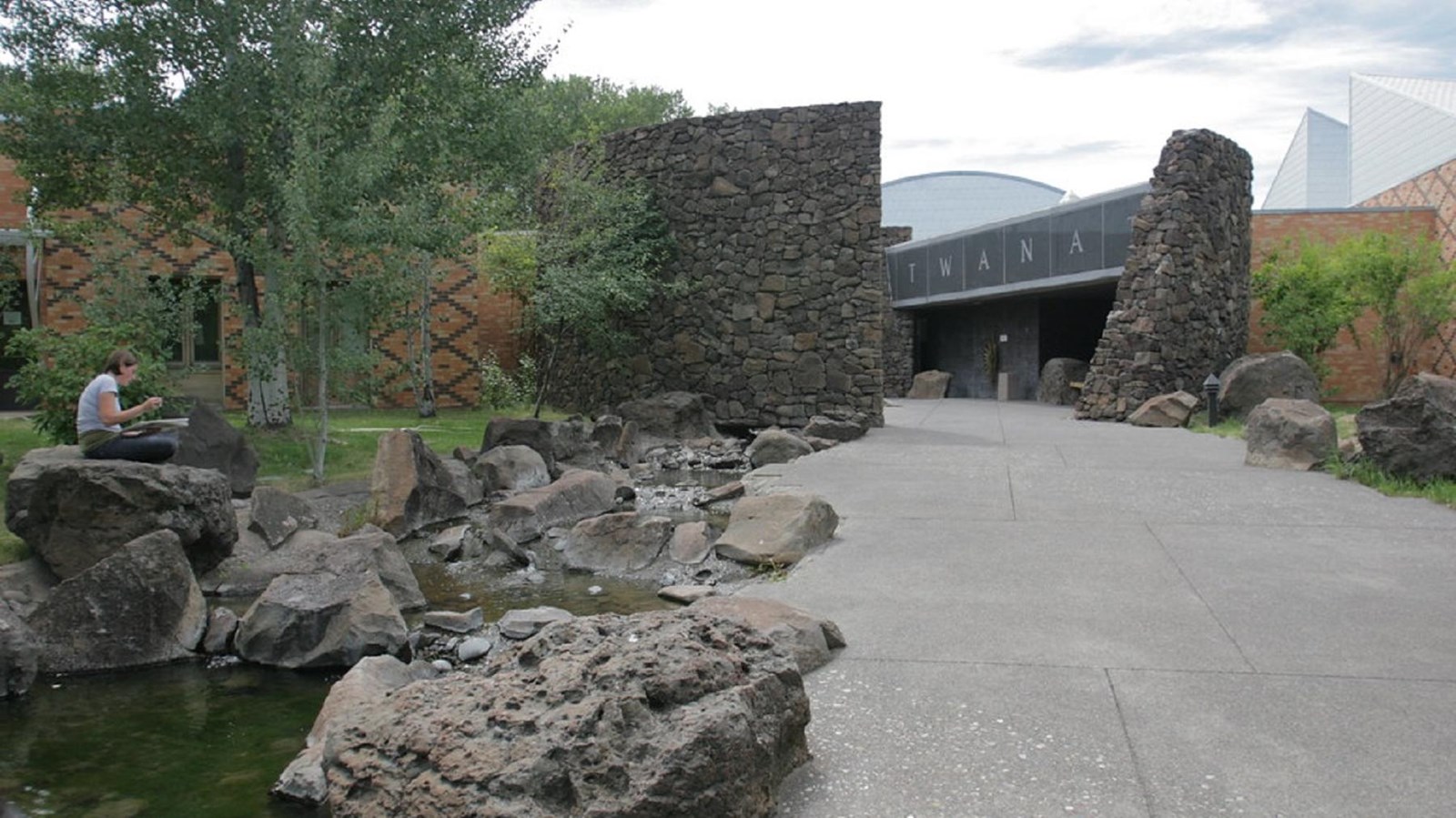Last updated: June 22, 2021
Place
Museum at Warm Springs

"Warm Springs Museum 02" by Erik R. Bishoff is licensed under CC BY-NC-ND 2.0
Benches/Seating, Gifts/Souvenirs/Books, Historical/Interpretive Information/Exhibits, Information, Information - Ranger/Staff Member Present, Parking - Auto, Parking - Bus/RV, Restroom, Trash/Litter Receptacles, Wheelchair Accessible
Lewis and Clark NHT Visitor Centers and Museums
This map shows a range of features associated with the Lewis and Clark National Historic Trail, which commemorates the 1803-1806 Lewis and Clark Expedition. The trail spans a large portion of the North American continent, from the Ohio River in Pittsburgh, Pennsylvania, to the mouth of the Columbia River in Oregon and Washington. The trail is comprised of the historic route of the Lewis and Clark Expedition, an auto tour route, high potential historic sites (shown in black), visitor centers (shown in orange), and pivotal places (shown in green). These features can be selected on the map to reveal additional information. Also shown is a base map displaying state boundaries, cities, rivers, and highways. The map conveys how a significant area of the North American continent was traversed by the Lewis and Clark Expedition and indicates the many places where visitors can learn about their journey and experience the landscape through which they traveled.
The arrival of Meriwether Lewis and William Clark was a defining moment in the tribal histories of the Wasco and Warm Springs People. For Lewis and Clark and the Corps of Discovery, their experiences with the Warm Springs Tribe was at times cordial and friendly, but other times distrustful and hostile. The Celilo Falls and The Dalles sites on the Columbia River were considered one of the most important fishing and trading centers of the northwest region. The importance of this area and the people who lived there were overlooked by the Expedition.
Today, the Museum at Warm Springs provides visitors the opportunity to learn about this very same land, and the Confederated Tribes of Warm Springs, which now represents the Wasco, Warm Springs and Paiute Peoples. The Paiutes were moved to the reservation in the late 1870s following the Bannock wars. Entering the museum begins with a walk next to a live stream, then into a circular stone drum, and up to an exquisite door with handles shaped like a bustle. The exterior, designed to resemble a traditional encampment among beautiful cottonwood trees, is situated alongside Shitike Creek which empties into the majestic Deschutes River. The impressive museum entry is the first glimpse into a rich, unique culture.
The 25,000 square-foot museum provides an impressive sight to the public as well as a safe conservatory for the traditional treasures of the Tribes. Its mission includes educating the public as well as preserving the history, culture, and traditions of the Confederated Tribes of Warm Springs. “We wanted the museum to tell the story of our People,” explains Delbert Frank, Sr., President of the museum’s Board of Directors in 1993 and an influential member of the Tribal Council. “We wanted it to tell the truth. To educate both the public and our own children. To tell them who we are.”
After entering the building, the stream continues as a gray polished slate floor. Visitors encounter huge columns of what was once tall native trees of the Reservation. This is the main lobby of The Museum, and the entrance to the Permanent Exhibit Hall.
The Permanent Exhibit details the culture and history of The Confederated Tribes of Warm Springs. “Technically one of the best unified exhibition plans in any museum in America,” states James Nason, Curator of New World Ethnology, Burke Museum, University of Washington, commenting on the permanent exhibit gallery. The curatorial department has one of the largest and most complete Native American artifact collections in the country, including an exquisite collection of Plateau Native American artifacts.
The museum also features a rotating exhibit gallery, library and archives, education room with cooking facilities, conference/board room, artifact collection space and office, and an administrative area. The gift shop offers a tremendous array of locally-made beadwork and arts, Pendleton products, huckleberry products, jewelry, books and traditional and contemporary Native American music. Performances, demonstrations and other public events are held at a small outside amphitheater.
In addition to special exhibits, annual events at the museum include the Warm Springs Tribal Member Art Exhibits in October, and the Annual Warm Springs Tribal Youth Art Exhibit in January.
